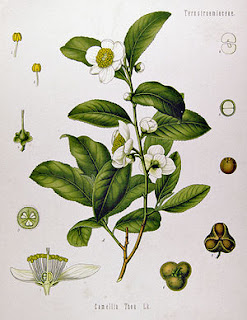Traditional Chinese, Simplified Chinese originated beginning the many regions of figurines and has become rife in countless extra parts of the globe starting Asia to the Americas, Australia, Western Europe and Southern Africa. In recent years, connoisseurs of Chinese gastronomy give furthermore sprouted in Eastern Europe and South Asia. American Chinese cooking and Canadian Chinese victuals are popular examples of local varieties.
Confined cultural variations adapt to a great extent inside China, giving climb to a typical style of food across the nation. Traditionally their are eight main regional cuisines, or Eight Traditions Anhui, Cantonese, Fujian, Hunan,Jiangsu,Shandong,Sichuan and Zhejiang. every so often four of the Eight immense Traditions are prearranged better, and are considered to dominate the cookery heritage of China, acknowledged in turning as the "Four Great Traditions.
They are notably clear along geographical lines: Sichuan (Western China), Cantonese (Southern China),Shandong (Northern China), as well as Huaiyang Cuisine (Eastern China), a major elegance resultant as of Jiangsu cooking and drawn viewed as the account of that region's cooking.
In advanced times, Beijing cuisine and Shanghai cuisine on motivate are what's more cited beside as well as the classical eight regional styles as the Ten Great Traditions . in attendance are too featured Buddhist and Muslim sub-cuisines surrounded by the superior Chinese cuisine, plus an emphasis on vegetarian and halal-based diets respectively.
1) Presentation:-
A Song era Chinese painting of an open-air banquet, the painting is a re-establish of a after-taste rule original. In largely dishes in Chinese cuisine, cooking is primed in bite-sized pieces, arrange for direct alternative up and eating. In time-honored Chinese cultures, chopsticks are worn at the table.
2) Vegetarianism in bone china :-
Vegetarianism is not uncommon or infrequent in China; though, as is the holder in the West, it is merely expert by a comparatively small tiny proportion of the population. Most Chinese vegetarians are Buddhists, following the Buddhist teachings as regards minimizing suffering. Chinese vegetarian dishes time and again contain large varieties of vegetables (e.g. Bok Choy, shiitake mushroom, sprouts, corn) and some mock meat. Such simulated meat is fashioned customarily by way of soy protein and/or wheat gluten to mimic the texture, taste, and outer shell of duck, chicken, or pork. Imitation seafood items, inished from supplementary vegetable substances such as konjac, are also available.
Confined cultural variations adapt to a great extent inside China, giving climb to a typical style of food across the nation. Traditionally their are eight main regional cuisines, or Eight Traditions Anhui, Cantonese, Fujian, Hunan,Jiangsu,Shandong,Sichuan and Zhejiang. every so often four of the Eight immense Traditions are prearranged better, and are considered to dominate the cookery heritage of China, acknowledged in turning as the "Four Great Traditions.
They are notably clear along geographical lines: Sichuan (Western China), Cantonese (Southern China),Shandong (Northern China), as well as Huaiyang Cuisine (Eastern China), a major elegance resultant as of Jiangsu cooking and drawn viewed as the account of that region's cooking.
In advanced times, Beijing cuisine and Shanghai cuisine on motivate are what's more cited beside as well as the classical eight regional styles as the Ten Great Traditions . in attendance are too featured Buddhist and Muslim sub-cuisines surrounded by the superior Chinese cuisine, plus an emphasis on vegetarian and halal-based diets respectively.
1) Presentation:-
A Song era Chinese painting of an open-air banquet, the painting is a re-establish of a after-taste rule original. In largely dishes in Chinese cuisine, cooking is primed in bite-sized pieces, arrange for direct alternative up and eating. In time-honored Chinese cultures, chopsticks are worn at the table.
2) Vegetarianism in bone china :-
Vegetarianism is not uncommon or infrequent in China; though, as is the holder in the West, it is merely expert by a comparatively small tiny proportion of the population. Most Chinese vegetarians are Buddhists, following the Buddhist teachings as regards minimizing suffering. Chinese vegetarian dishes time and again contain large varieties of vegetables (e.g. Bok Choy, shiitake mushroom, sprouts, corn) and some mock meat. Such simulated meat is fashioned customarily by way of soy protein and/or wheat gluten to mimic the texture, taste, and outer shell of duck, chicken, or pork. Imitation seafood items, inished from supplementary vegetable substances such as konjac, are also available.


